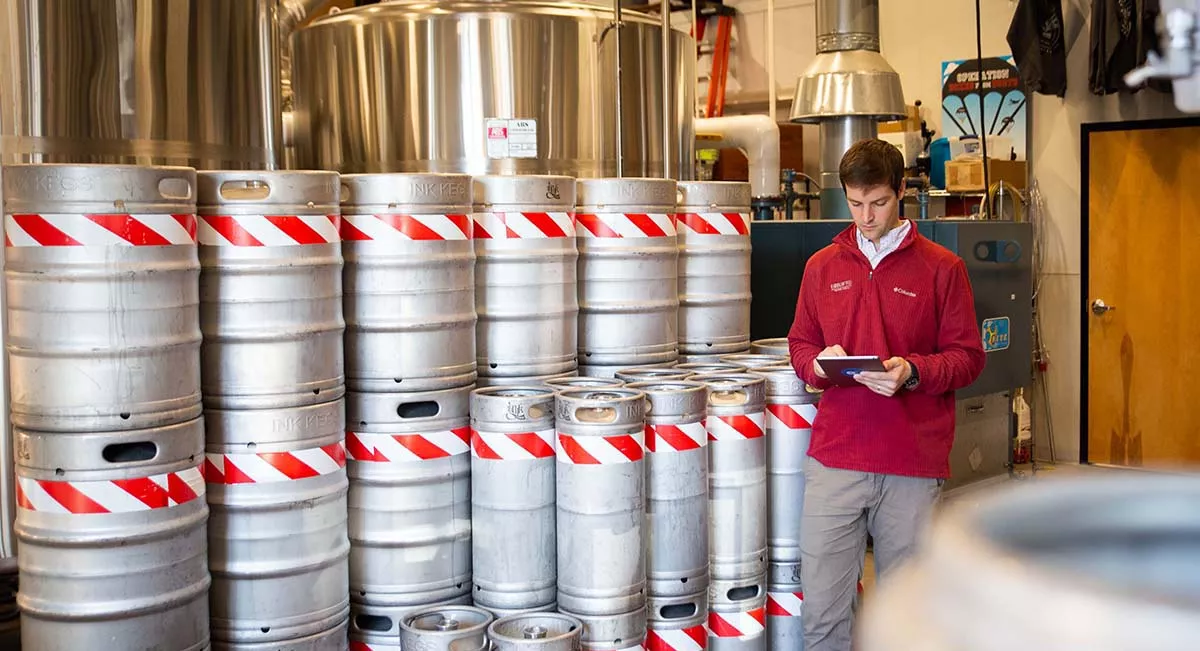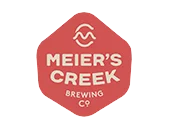Craft brewing is a labor of love. The passion, creativity, and commitment that goes into making each unique batch is what draws so many to this booming industry. According to the Brewers Association, the craft beer market in the U.S. reached an impressive $28.9 billion in 2023, with a 3.4% dollar growth from the previous year.
However, amidst the excitement of crafting the perfect pint, there are logistical challenges that can put a damper on the brewmaster’s joy—like keeping tabs on your kegs. Let’s face it, keg tracking isn’t sexy. It doesn’t have the allure of experimenting with a new hop variety or the satisfaction of watching a happy customer take that first sip. But hear us out—keg tracking is absolutely crucial for the financial health and smooth operation of your brewery.
Losing track of your kegs is like watching your hard-earned money evaporate into thin air. It’s frustrating, it’s inefficient, and it’s totally avoidable. The good news is, that with a little bit of planning and the right tools in your arsenal, you can become a keg tracking master.
The Costly Impact of Lost Kegs
Alright, let’s talk numbers. The British Beer & Pub Association (BBPA) estimates that keg and cask losses in the UK amount to £50 million each year. In the US, the situation is equally alarming. The Brewers Association estimated that each US brewery loses between 3% and 5% of its kegs annually.
With each keg costing around $100, US brewers are losing between $60 million and $100 million every year. On a global scale, keg losses are estimated to cost the industry a staggering $300 million to $500 million annually. Let that sink in for a moment.
To put this into perspective, a brewery producing 10,000 barrels annually could be losing between $4,600 and $13,700 each year due to misplaced kegs. As your production volume grows, these costs can quickly add up, putting a significant dent in your bottom line. By implementing an effective keg tracking system, you can minimize these losses and redirect those funds towards growing your business.
But it’s not just about the money. Losing kegs also means operational headaches and frustrations for your team. Just ask Rocky Justice, the Brewing Manager at Blowing Rock Brewing in North Carolina.
“Keg tracking has been a game-changer for us,” Justice shares. “Before we implemented a system, we were constantly playing guessing games about where our kegs were and when they’d be back. It led to a lot of unnecessary stress and wasted time.”
Now, with a clear keg tracking process in place, Justice and his team have a real-time view of their keg fleet. “It has improved our communication with distribution partners immensely. We have a clear timeline of where each keg is at any given moment. It makes requesting kegs back a breeze because there are no more question marks,” he explains.
The experience of Blowing Rock Brewing is not unique. Countless breweries around the world have felt the pain of lost kegs and the relief that comes with implementing a robust tracking system. The numbers don’t lie—investing in keg tracking is a smart move for any brewery looking to optimize its operations, reduce costs, and improve its bottom line. So, if you’re still relying on guesswork and crossed fingers to keep tabs on your kegs, it’s time to consider a change.
Common Keg Tracking Challenges & Solutions
Alright, so we know keg tracking is important. But what does it actually entail? Now that we’ve seen the significant impact that lost kegs can have on your brewery, let’s dive into some of the specific challenges you may face when it comes to tracking your fleet.
These are common pain points that breweries of all sizes encounter, but the good news is that there are solutions to overcome them. By understanding some key challenges and implementing the right strategies to tackle them head-on, you can take control of your kegs and keep your brewery running smoothly.
Challenge #1: Keeping an accurate count of total kegs
Without a reliable system in place, it’s easy to lose track of how many kegs you actually have. This can lead to shortages when you need kegs the most or unnecessary spending on new kegs when you already have plenty. The lack of visibility into your total keg count can cause significant operational and financial headaches.
Solution: Assign a unique identifier (like a serial number) to each keg and log them in a centralized database. This is your master list that should be updated every time a keg’s status changes. Regularly reconciling your physical keg count with your database ensures accuracy and helps you quickly identify any discrepancies.
Challenge #2: Knowing the status and location of each keg
Kegs are constantly on the move—from your brewery to distributors to customers and back again. If you don’t have real-time updates on where each keg is and whether it’s full, empty, or in transit, you’re essentially flying blind. This lack of visibility can result in lost kegs, delayed returns, and frustrated customers.
Solution: Leverage technology like barcode or RFID tags to scan and update keg status as they move through your supply chain. This gives you real-time visibility into where each keg is, whether it’s full or empty, and when it’s due back. With this information at your fingertips, you can proactively manage your keg fleet and ensure timely returns.
Challenge #3: Monitoring keg turnover and freshness
Your beer is only as good as its freshness. If kegs linger too long at a distributor or customer location, the quality of your product can suffer. Without a way to monitor how long each keg has been out in the field, you risk serving stale beer that can damage your reputation and bottom line.
Solution: Set up alerts in your tracking system to flag when kegs have been at a certain location for too long. This helps ensure your product is always fresh when it reaches the customer and that kegs aren’t forgotten. You can also use this data to identify trends and work with your distributors and customers to optimize keg turnover.
Challenge #4: Tracing kegs for quality control
Despite your best efforts, quality issues can arise. If you discover a problem with a particular batch of beer, you need to be able to quickly identify which kegs contain that batch so you can recall them if necessary. Without a way to link each keg to its contents and batch information, you’re faced with the costly and time-consuming task of recalling all of your kegs, regardless of whether they’re affected by the issue.
Solution: When you assign each keg a unique identifier, also link the batch or lot information. This allows for targeted recalls if quality issues arise, without having to pull your entire inventory. You can quickly locate and retrieve only the affected kegs, minimizing waste and protecting your brand reputation.
These challenges underscore the importance of having a robust keg tracking system in place. By addressing these issues head-on, you can ensure that your kegs are always accounted for, your product remains fresh, and you can quickly respond to any quality concerns.
What Data Should You Track?
Now that we’ve covered the challenges, let’s talk about what data points are actually important to track. Ask yourself:
- How many kegs do I have in total?
- Where is each keg right now—the warehouse, at a customer, in the taproom?
- Are they empty or filled?
- When will I need to order more kegs, or get empty ones back from customers?
- How long have kegs been sitting at a customer location, potentially impacting the freshness of the beer?
- If there’s a quality issue, how can I quickly identify which kegs are affected?
If you can’t confidently answer these questions, it’s a clear sign your keg tracking needs some TLC. At a minimum, you should be tracking:
- Each keg’s unique identifier (serial number, barcode, etc.)
- Size and type of keg
- The beer it contains
- Associated batch or lot numbers
- Current location
- Freshness dates
- Parties responsible for the keg at each stage
Choosing the Right Keg Tracking Method
You know you need to track your kegs, but how should you actually go about it? There are a few different approaches breweries can take, each with its own advantages and challenges.
One common starting point is good old-fashioned spreadsheets. They’re cheap (often free), and you can customize them to fit your specific needs. However, as your keg fleet grows, managing everything in a spreadsheet can quickly become a nightmare. You’ll likely find yourself drowning in a sea of manual data entry, version control issues, and a lack of real-time visibility.
Another option is keg leasing or “pay-per-fill” services. With this model, you outsource your keg management to a third party who provides the kegs and handles the tracking for you. This can be a good choice if you’re looking for a hands-off solution or if you don’t have the capital to invest in your own kegs. However, it does come with ongoing costs, and you may have less control over your keg fleet and branding.
Some breweries also explore RFID (Radio-Frequency Identification) systems. These use high-tech tags and scanners to automatically log keg movements, which can be a big time-saver. But RFID comes with a hefty price tag for all the necessary hardware, software, and training. It’s a significant investment that may be overkill for smaller operations.
For many breweries, the sweet spot is purpose-built keg tracking software. These solutions are designed specifically for the needs of the craft beverage industry, so they come with features like batch tracking, automated alerts, and integration with your other key systems (think: inventory management, accounting, sales, etc.).
With the right software, you can get real-time visibility into your keg fleet without all the manual effort. Plus, you’ll be able to spot trends, anticipate demand, and make data-driven decisions to optimize your operations. It’s a scalable solution that can grow with your brewery.
Of course, keg tracking software is an investment, and there can be a learning curve as you get set up. But compared to the alternatives, it often offers the best balance of functionality, efficiency, and long-term value.
Stop losing money on missing kegs and stale beer that doesn’t sell. Get Ekos: Learn More
Implementation Best Practices
Ultimately, the right keg tracking method for your brewery will depend on your unique needs, resources, and growth plans. But if you’re serious about streamlining your operations and keeping your kegs (and your profits) flowing, it’s hard to beat the best brewery software solutions. It’s an investment in the future of your brewery.
Alright, you’ve selected your weapon of choice—now it’s time to put it into action. Properly setting up your keg tracking system takes some focused effort upfront, but trust us, it’s worth it.
First, block off dedicated time for the initial setup and involve all relevant team members. You want to make sure every keg is accounted for and logged with complete data from the start.
For each keg, track:
- Unique identifier (serial number, barcode, etc.)
- Size and type (1/2 barrel, 1/6 barrel, etc.)
- Contents (beer name and style)
- Associated batch or lot number
- Current location
- Status (full, empty, in transit, etc.)
- Last status change date
- Days empty
- Days at current location
- Responsible parties at each stage
Next, train your team. Everyone who handles kegs should know the tracking process inside and out. Create standard operating procedures (SOPs) and host training sessions to get everyone on board.
Finally, schedule regular audits. Keg data is only useful if it’s accurate, so set a cadence to regularly spot check your records against reality.
Streamlining Your Keg Tracking Process
If you’re looking for a way to simplify your keg tracking, choose comprehensive brewery management software that includes a robust keg tracking module. The right software will integrate seamlessly with your other critical business functions like inventory, production, sales, and accounting.
With a well-designed system, you can easily see the real-time status and location of every keg, set custom alerts for when kegs have been gone too long, and quickly look up contents and batch info. If the software includes a user-friendly mobile app, your team can scan and update keg data on the go, making the whole process a breeze.
Real-world success stories demonstrate the impact of implementing a comprehensive keg tracking solution. Take Bike Dog Brewing, for example. As the West Sacramento brewery grew, managing inventory, production, sales, and accounting with spreadsheets became increasingly cumbersome.
By adopting Ekos, the team at Bike Dog Brewing was able to access critical business information on the go, track their 600-700 kegs effectively, and seamlessly integrate their data with QuickBooks.
Co-owner Sage Smith noted “I couldn’t run my business without Ekos. Like any good tool, everyone [at Bike Dog] is using it, and we’re not looking to use anything else.”
Implementing a robust keg tracking system streamlines day-to-day operations and sets your brewery up for future growth and success.
Mastering Keg Tracking for a Thriving Brewery
Running a successful craft brewery is no small feat. There are countless moving parts to manage, and it’s easy for things like keg tracking to fall by the wayside. But as we’ve seen, neglecting your keg fleet can have significant financial and operational consequences.
The good news is, that with a little planning, the right tools, and a commitment to consistent tracking, you can turn keg management from a headache into a streamlined part of your operations. By tracking the right data, choosing a method that fits your needs, and implementing best practices, you’ll gain complete visibility into your keg fleet and be able to make data-driven decisions that benefit your bottom line.
And remember, you don’t have to go it alone. Powerful tools like Ekos brewery management software can make your keg tracking (and your entire brewery operation) a whole lot easier. With Ekos’ comprehensive keg tracking module that integrates with all your other key business functions, you’ll have the insights you need to optimize your fleet and keep your brewery thriving.So what are you waiting for? Start your journey to mastering keg tracking today, and watch your craft brewery soar to new heights. Book a free demo with the Ekos team to see how our powerful keg tracking module can help you take control of your kegs, streamline your operations, and support your brewery’s growth.





